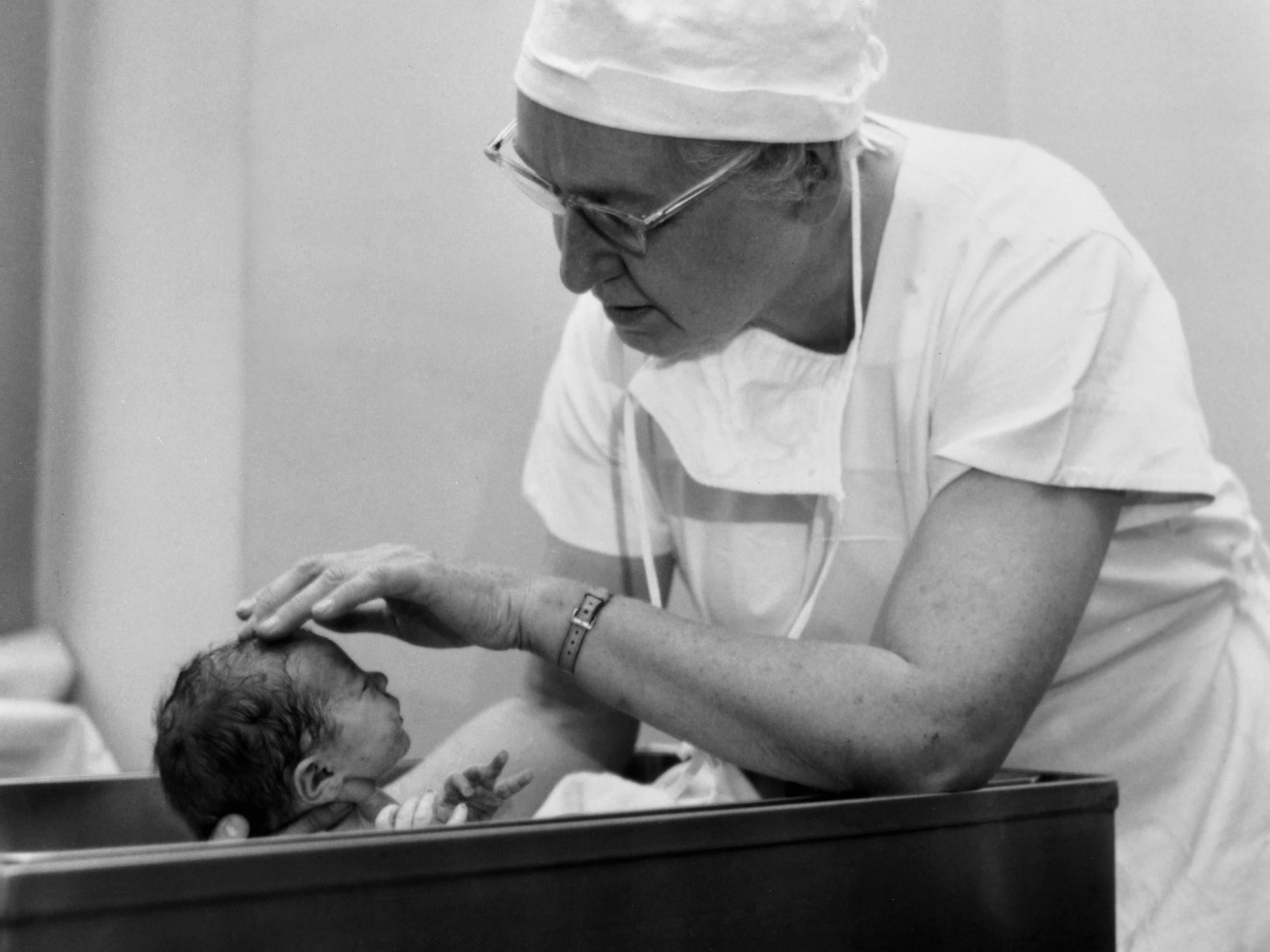Virginia Apgar: Google Doodle celebrates the doctor whose simple health test is still saving newborn babies today
Pioneering obstetrical anaesthetist credited with helping to lower US infant mortality rate celebrated in today's Google Doodle
Your support helps us to tell the story
From reproductive rights to climate change to Big Tech, The Independent is on the ground when the story is developing. Whether it's investigating the financials of Elon Musk's pro-Trump PAC or producing our latest documentary, 'The A Word', which shines a light on the American women fighting for reproductive rights, we know how important it is to parse out the facts from the messaging.
At such a critical moment in US history, we need reporters on the ground. Your donation allows us to keep sending journalists to speak to both sides of the story.
The Independent is trusted by Americans across the entire political spectrum. And unlike many other quality news outlets, we choose not to lock Americans out of our reporting and analysis with paywalls. We believe quality journalism should be available to everyone, paid for by those who can afford it.
Your support makes all the difference.American obstetrical anaesthetist Dr Virginia Apgar (1909-1974) was born 109 years ago today.
Google’s latest animated Doodle pays tribute to the creator of the “Apgar score”, the test still used to this day to quickly assess the health of newborn babies.
Her pioneering work in comparing the wellbeing of sickly infants to healthy ones proved crucial to lowering the infant mortality rate in the US and advancing the cause of maternity care.
Virginia Apgar was born in Westfield, New Jersey, on 7 June 1909 into a family of music lovers, her father an insurance executive by trade but a keen amateur astronomer and inventor.
The death of her elder brother from tuberculosis and the persistent ill health of another brother, Lawrence, inspired her decision to study medicine as a young woman.
Graduating from Mount Holyoke College in Massachusetts in 1929, she studied zoology and minored in physiology and chemistry before finishing fourth in her class at Columbia University College of Physicians and Surgeons in 1933, completing a residency in surgery at the same institution in 1937.
She was discouraged from continuing her career as a surgeon, which was regarded as a very male discipline at that time, and instead trained in anaesthesiology at the University of Wisconsin-Madison under Dr Ralph Waters, who had established the country’s first dedicated unit. After further study of the field at New York’s Bellevue Hospital, she returned to Columbia as director of its new anaesthesia division, its first female head of department.
Building the unit from the ground up in partnership with her old mentor Dr Allen Whipple (who had steered her away from surgery), Dr Apgar worked tireless as both a practising physician and administrator, no easy task when America’s entry into the Second World War in 1941 created significant staffing shortages.
Dr Apgar developed her five-point score for assessing newborn health in 1952. The test grades babies on scores of zero to two on five key criteria: the colour of their skin, their pulse rate, their reflex ability, their responsiveness to limb flexion and their respiratory rate. The resulting scores are totted up to give a total out of 10 indicating the health or otherwise of the infant in question.
The criteria can be remembered by the acronym ”Apgar”, standing for Appearance, Pulse, Grimace, Activity, Respiration.
In 1959, by which point her test had been rolled out across US maternity hospitals, Dr Apgar left the Columbia-Presbyterian Medical Center to earn a Master of Public Health degree from the Johns Hopkins School of Hygiene and Public Health and served as vice president for medical affairs at the March of Dimes Foundation to advance the study of birth defects.
She was an outspoken advocate for universal vaccinations to prevent mother-to-child transmission of rubella during the pandemic that struck 12.5m people in the US between 1964-65 and contributed more than 60 articles to newspapers, magazines and academic journals, publishing her book Is My Baby All Right? with Joan Beck in 1973.

Dr Apgar was known throughout her career for her warm bedside manner and forthright optimism. In her personal life, she played the violin, enjoyed a range of hobbies from fly-fishing and stamp collecting and took flying lessons, dreaming of swooping under the George Washington Bridge.
Although she rarely campaigned against or spoke publicly about gender inequalities, Dr Virginia Apgar glided past the sexism of her period with ease, preferring instead to lead by example and allow her professional excellence and commitment to her work speak for itself.

Join our commenting forum
Join thought-provoking conversations, follow other Independent readers and see their replies
Comments